Do you know that firefighters are three times more likely to die from some cancers than the general population? According to a recent study, this risk is due to exposure to harmful chemicals when putting out fires.
Aqueous Film-Forming Foam (AFFF) is one of the major chemicals that firefighters use that has been linked to cancer risk. Although firefighters use AFFF to put out flames, it contains harmful compounds that can accumulate in the body and lead to cancer.
AFFF firefighting foam manufacturers may be held accountable for failure to warn of the risks posed by the hazardous compounds in the product.
Firefighters have brought numerous lawsuits seeking damages for cancer-related harms such as testicular and prostate cancer. These AFFF lawsuits have been merged into multidistrict litigation (MDL).
So, do you wish to join the current MDL? Read on to learn about AFFF foam lawsuits and know whether you are eligible for compensation.
Firefighters More Likely to be Diagnosed with Cancer Than Other People
Firefighters diagnosed with cancer following exposure to hazardous chemicals while using firefighting foam have recently filed AFFF foam lawsuits.
According to the International Agency for Research on Cancer, firefighting exposes workers to substances that increase their chance of developing cancer.
Firefighters are more prone to developing cancer than those working in other professions. It has been thought that cancer is an occupational risk for those who combat fires due to exposure to fire effluent.
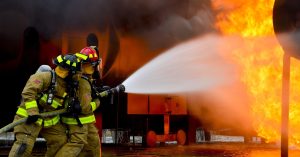
Fire effluents include toxic gases, smoke, and heat, which can be ingested, inhaled, or absorbed through the skin by firefighters.
But according to recent research, Aqueous Film-Forming Foam’s hazardous ingredients expose firefighters to an elevated risk of cancer (AFFF).
Recent Study Shows Firefighters Have High Occupational Risk of Cancer
A recent research published in the Oxford Academic strived to compare the death rates of cancer-stricken firefighters to those of the general population.
The researchers discovered firefighters are exposed to carcinogenic substances even when using breathing gear. AFFF firefighting foam may contain some harmful substances to which firefighters are exposed.

Perfluoroalkyl and polyfluoroalkyl chemical substances (PFAS) are among the compounds that make AFFF firefighting foam. PFAS are forever chemicals that aid in the suppression of flames.
The hazardous nature of PFAS in firefighting foam puts firefighters at higher cancer risk. PFAS in AFFF firefighting foam can expose firefighters by inhalation, oral intake, or skin contact.
These harmful substances can link to blood proteins and result in various malignancies.
AFFF Firefighting Foam Exposure Can Cause Testicular Cancer
Firefighters exposed to the hazardous substances in AFFF firefighting foam are more likely to suffer from testicular cancer.
According to a report published in the Journal of Clinical Endocrinology and Metabolism, young people exposed to PFAS for an extended period may have problems with their reproductive systems.
This finding may explain why testicular cancer is so common in firefighters who work with toxic firefighting foam.
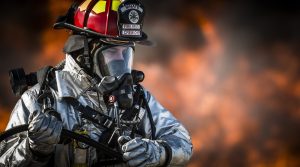
Testicular cancer results when cells in the testicles grow and mutate to foam a tumor, for example, due to the high saturation of PFAS in the body.
A testicular lump, swelling, soreness, and discomfort in the groin, scrotum, or testicles are some signs that someone has testicular cancer.
Prostate Cancer Caused by AFFF Firefighting Foam Exposure
PFAS accumulation in the body can potentially cause prostate cancer. The prostate is a tiny organ THAT makes the seminal fluid that transports sperm.
Prostate cancer can develop due to the PFAS’s ability to trigger cell mutation in the prostate. Blood in the urine and semen, erectile dysfunction, and urinary issues are a few of the signs and symptoms of prostate cancer.
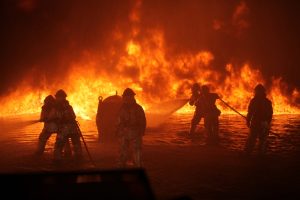
The Oxford Academic study found that firefighters with prostate cancer had a higher mortality rate than non-firefighters. Some substances in AFFF firefighting foam, like styrene and benzene, have been linked to the development of prostate cancer.
According to research conducted in Kent County, Michigan, people exposed to PFAS had a greater risk of prostate cancer than those who were not.
The AFFF Foam Lawsuit MDL
Firefighters who develop cancer following exposure to AFFF firefighting foam may file AFFF foam lawsuits to seek compensation for damages.
Numerous lawsuits have been brought against AFFF manufacturers, including 3M Company, Tyco Fire Products, and Chemguard, for failing to warn users of dangerous PFAS in the firefighting foam.
On September 29, 2018, the multiple AFFF foam lawsuits that had already been filed were consolidated into multidistrict litigation (MDL).
An MDL streamlines discovery, enables plaintiffs to share resources, and increases the likelihood of a global settlement by bringing all litigation before one court.
The AFFF foam lawsuit MDL was combined under Judge Richard M. Gergel in the U.S. Federal Court for the District of South Carolina.
Studies published over the last five years have shown more proof of harmful chemical exposure to firefighters from AFFF firefighting foam.
The AFFF foam lawsuit MDL has consolidated more than 2,500 cases thanks to this evidence. Bellwether trials—test trials in which the accusers and defendants may see how jurors react to the evidence—are scheduled to start in May 2023.
Damages in an AFFF Foam Lawsuit
You may be able to seek compensation for damages inflicted by the negligent behavior of the at-fault party by filing an AFFF foam lawsuit.
When diagnosed with cancer due to exposure to hazardous AFFF foam, you may suffer costly economic losses since you will need to pay for your medical care and may have to take time off work.
Cancer can also result in anxiety, depression, and other psychological issues that decrease your quality of life. You may seek compensation for these non-economic damages.
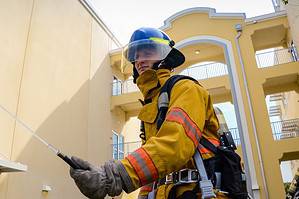
Some of the AFFF damages for which you can be entitled to compensation include:
- Medical costs
- Lost wages
- Reduced capacity to earn.
- Pain and suffering
- Wrongful death
- Loss of consortium
- Funeral and burial expenses
- Loss of quality of life
How Can a Product Liability Lawyer Help You with an AFFF Foam Lawsuit?
A product liability attorney can assist you with the AFFF foam lawsuit procedure since they are familiar with managing these cases.
They probably have experience representing clients in MDLs and can thus help you with your case.
Product liability claims require holding large corporations liable for their negligence, complicating these lawsuits.
Consult with a knowledgeable product liability attorney to determine how they can position you to obtain reasonable compensation for your damages.
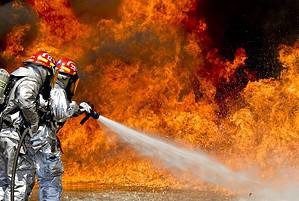
Among the ways a product liability attorney might support your AFFF foam lawsuit are as follows:
- Determine your current and future AFFF damages.
- Identify the at-fault party.
- Send a demand letter to the at-fault party and their insurance provider.
- Gather evidence to demonstrate that exposure to AFFF chemicals affected your health.
- Speak with the witnesses.
- Speak with the attorneys representing other claimants in the AFFF foam lawsuit MDL.
- Pool resources together with other AFFF foam lawsuit litigants
Get Help with Your AFFF Foam Lawsuit
If you have developed cancer after exposure to AFFF firefighting foam, you may file a lawsuit to seek compensation for your damages.
The current lawsuits have been consolidated into an MDL, which would be difficult for you to navigate alone. It would help if you had a skilled product liability attorney with experience representing clients in MDL cases.
Legal Giant can make your attorney hiring process easier by linking you with a highly experienced lawyer. We partner with only the best who will put your interests first to ensure you get the compensation you need and deserve.
Contact us for a free evaluation of your case.

